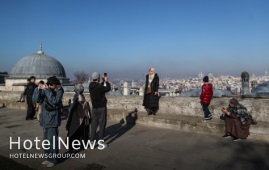
The tourism industry started 2024 reservations early. Tourism professionals say that demand from abroad is more intense than last year, and that prices will increase by 20 percent in foreign currency in 2024. The European market in the tourism sector will grow in the range of 10-15% in 2024, while the CIS market will remain the same, especially drawing attention to the growth in the UK market. It is estimated that travel will increase by 5-10% in 2024. Industry representatives are of the opinion that the European market will grow in the 10-15% range, while the CIS market will remain the same. President of the Mediterranean Touristic Hoteliers and Operators Association, stated that the first reservations came from the British market, and 50% of the sales were completed from the British market at the beginning of the new year.
Create: Jan 25, 2024 Edit: Jan 25, 2024 International News
Over 94,000 domestic tourists have stayed in the province during the mentioned time, Jalil Jabari said on Thursday. In nine months, over 16,000 foreign travelers stayed in the province’s accommodation centers and it is estimated that 5,500 foreign tourists will stay in these units in the fourth quarter of the year, the official added. The accommodation centers have generated over 40 job opportunities during the mentioned time as well, he noted. Back in December, Jamshid Hamzehzadeh the head of the Iranian Hoteliers Association announced that following the planned measures, the occupancy rate of the country’s hotels, which had fallen below five percent because of the outbreak of the coronavirus, has reached 45 percent over the past three months. Multiple problems, notably the pandemic, caused a severe impact on the tourism industry, the official explained. Even before the coronavirus outbreak and in 2019, travel was reduced due to heavy rains and flooding across the country, and the hotel industry had to recoup nearly 100 percent of the costs paid for canceled hotel reservations, he added. The Iranian hoteliers have lost 220 trillion rials (about $740 million) over the past two years, he noted. However, some problems have been resolved and the hotels’ condition has improved, he mentioned. Back in October, the official announced that Iranian hotels are ready to receive foreign tourists as the issuance of tourist visas and the flow of foreign tourists from land and air borders would be resumed. Ninety percent of the hotel staff have been vaccinated against the coronavirus, so the hotels are ready to welcome foreign tourists, observing strict health protocols, he said. The main destinations of foreign tourists in Iran are specifically cities such as Mashhad, Qom, Tabriz, Shiraz, Yazd, and Isfahan, and to return to the figure of over eight million incoming tourists before the outbreak of the coronavirus, serious planning is required, the official added. Iraqi tourists will flood the country once the borders open, but attracting tourists from Europe will require some time, he noted. However, he noted that two-thirds of the hotel staff have lost their jobs, he added. Back in September, Hamzehzadeh announced that all employees of accommodation centers across Iran are scheduled to be vaccinated against the coronavirus. “To vaccinate staffs of all accommodation centers, including eco-lodges, apartment hotels, and guest houses, as well as hotels, more coordination with the Ministry of Health is needed,” he added.
Create: Jan 15, 2022 Edit: Jan 15, 2022 Regional News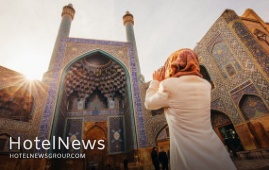
The Iranian tourism industry has suffered $233m losses due to COVID restrictions over the past two years. “Iranian tourism facilities have incurred a loss of 69 trillion rials ($233 million) due to the outbreak of the coronavirus over the past two years,” an official with the tourism ministry has said. It has been a major shock to the tourism industry when the coronavirus emerged in 2019, Rokna quoted Mohammad-Kazem Kholdi-Nasab as saying on Monday. Citing an example, the official said, nearly all pre-scheduled trips were canceled during the new Iranian year holidays in March 2020 except for those that were necessary. “Travel is not believed to be the cause of the outbreak, rather it is a lack of adherence to health protocols that have caused the outbreak, but people canceled their trips anyway, causing major damage to the tourist facilities across the country,” he explained. With only two months until the upcoming new Iranian year holidays, the tourism ministry is preparing safe and smart travel packages for Iranian holidaymakers and travelers, he noted. Nearly 70 percent of the population has been vaccinated, so these trips may be able to partially compensate for the damage done to tourism facilities over the past two years, he mentioned. Last year the tourism ministry announced that the tourism of the country was growing before the corona outbreak, its revenues reached $11.7 billion in 2019, which accounted for 2.8% of GDP, nearing the average share of tourism in the world GDP, which was 3.2 percent. Iran was ranked as the second fastest-growing country in tourism based on data compiled by the World Tourism Organization. Experts expect Iran to achieve a tourism boom after coronavirus contained, believing its impact would be temporary and short-lived for a country that ranked the third fastest-growing tourism destination in 2019. The Islamic Republic expects to reap a bonanza from its numerous tourist spots such as bazaars, museums, mosques, bridges, bathhouses, madrasas, mausoleums, churches, towers, and mansions, of which 26 are inscribed on the UNESCO World Heritage list. Under the 2025 Tourism Vision Plan, Iran aims to increase the number of tourist arrivals from 4.8 million in 2014 to 20 million in 2025.
Create: Jan 8, 2022 Edit: Jan 8, 2022 Regional News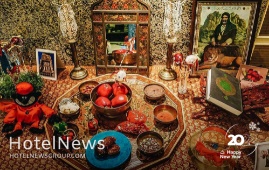
Iran pavilion is set to add extra charm to the prestigious Expo 2020 Dubai by widening its outline such as an enormous celebration of Noruz, the Persian New Year, which will begin on March 21. The decision was reached during a meeting between the Cultural Heritage, Tourism and Handicrafts Minister Ezatollah Zarghami, Culture and Islamic Guidance Minister Mohammad-Mehdi Esmaeili and Industry, Mining, and Trade Minister Reza Fatemi Amin, Mehr reported on Sunday. During the meeting, the financial support needed to implement the ideas for improving the condition of Iran’s pavilion during the remaining 100 days of the expo was also discussed. Noruz, which usually falls on March 21st every year, marks the beginning of spring across a vast geographical area. The feast was initially registered on the UNESCO List of the Intangible Cultural Heritage of Humanity in 2009, as a common tradition for Iran, Azerbaijan, India, Kyrgyzstan, Pakistan, Turkey, and Uzbekistan. However, the five other countries put in requests officially to be added to the list during a meeting held in Tehran in January 2014. In December 2016, Iran and 11 other countries registered Noruz as a common tradition during the 11th session of the Intergovernmental Committee for the Safeguarding of the Intangible Cultural Heritage, held in Addis Ababa, Ethiopia. Noruz, according to UNESCO, promotes the values of peace and solidarity between generations and within families, as well as reconciliation and neighborliness, thus contributing to cultural diversity and friendship among peoples and various communities. Noruz traditions, however, vary from place to place, ranging from leaping over fires and streams in Iran to tightrope walking, lighting candles at house doors, traditional games such as horse racing, or the traditional wrestling practiced in Kyrgyzstan.
Create: Jan 3, 2022 Edit: Jan 3, 2022 Regional News
After years marred by a global public health crisis, many of us are lapping up in-person social gatherings with friends, family and colleagues. Morning catch-ups over coffee, afterwork happy hour at the favorite waterhole or weekend drinks in town had mostly been replaced with coffees-to-go, virtual apéros, or alfresco drinking in winter like in summer. Consumers have become today their own baristas and bartenders, imbibing alone at home or at a distance outside. So how, and with what, will we quench our thirst? Here is EHL’s selection of the top drink trends in 2022. In this pandemic-era, there is no doubt that the megatrends for the new year will center around healthier and ‘cleaner’, more sustainable, premium and socially responsible products in line with the mantras – good for me, good for the planet – and quality over quantity. With movements like mindful drinking and “sober curious” gaining popularity, research indicates that alcohol consumption has declined with younger generations drinking less as they show greater interest in holistic wellness and health. And the beverage industry has been paying attention to these shifts in concern, consciousness and habits. Functional and healthy beverages are on the rise, and no and low alcohol ready-to-drink offerings from North America to Europe and Asia-Pacific have boomed as they prove to be both a more convenient and ‘safer’ option in a world still plagued by COVID-19 measures and barrier gestures. But globally, we’re seeing an array of interesting new product developments, packaging innovations and surprising mergers and acquisitions with the lines between the health movement, the low- and no- alcoholic category and the wider drinks industry becoming increasingly blurred. Beyond these general tendencies, we take a look at six particular drink trends for the year ahead. 1. CBD-infused relaxation drinks For those of us who frequent trendy bars, a controversial yet very 2022 new trend has found its way onto cocktail menus in only the most avant-garde of venues. 2. The bubble tea craze goes global Despite being invented in the 1980s, bubble tea is set to see its popularity soar to new heights. From the US to Germany, China to Brazil, the bubble tea industry is going global with its market expected to grow by almost $2 billion to reach $4.3 billion by 2027. The refreshing Taiwanese tea-based drink with its tapioca or fruit jelly ‘bubbles’ is appealing to health-conscious individuals enjoying the healthier variants low in sugar, with organic soya milk, green tea or fruity mixes as well as a younger generation seduced by its 200 or so different flavor combinations and even more customizable options making for a truly unique, tasty and fun drink. 3. Fermented drinks as a health-booster Increased awareness on the importance of fueling our body with quality and nutritious food and drink is driving a rapid growth in fermented beverages, occupying a significant portion within the functional and healthy drinks category. It’s estimated that probiotic beverages are expected to achieve over $77 billion in sales by 2025, almost double the revenue generated worldwide in 2018. While kombucha has been topping the leader board for some years, it’s now got some serious competition. Water kefir, with its more diverse probiotic strains shown to help boost the immune system and aid digestion, is gaining momentum and creeping into the mainstream. As is the fermented Mexican soda Tepache – another healthy, flavorsome, sustainable alternative to kombucha. While not new in itself, it has promising prospects in this ‘health-conscious’ era, but hey, it’s just a gut feeling! 4. Wines and champagnes with star power Celebrity beverage endorsements are nothing new. Think George Clooney and Nespresso, Jennifer Aniston and Smart Water, or countless sporting stars endorsing energy drinks. But expect to see more and more vineyards and champagne houses partnering with big names to capitalize on their glamorous images and extend their respective brand portfolios. After John Legend, Kylie Minogue or Brad Pitt, Cameron Diaz is the latest celebrity to venture into the wine business with her “clean” wines. The range comprises of an organic and vegan French rosé and Spanish white with no added sugar, with Diaz tapping into both the wellness trend and that of the growing ‘thirst’ for ‘pink’ wine. Such partnerships are also strategic in helping introduce wines and champagnes to new consumers, in particular millennial drinkers drawn to celebrity and wellness lifestyles, and who aren’t impartial to the Instagrammable aesthetic of a fizzy or rose-tinted drink. 5. Boxed wine as a sustainable (and sanitary) choice Did you know that during the COVID-19 pandemic, bag-in-a-box wine was the supermarket alcoholic “go-to” beverage? The draw? Beyond the product within the bag, boxed wine is easier to store, it better preserves open wine, and is proving a more hygienic and sustainable option, in particular for restaurants. With each three-liter box generating about half the carbon dioxide emissions to that of a glass bottle, boxed wine is also cheaper to transport, stock and more environmentally-friendly. Something that even the more premium wine houses can’t ignore. While wine connoisseurs may jump to the conclusion that boxed wine equates to poor quality, industry experts are suggesting that that’s changing, and fast, as sales are forecast to continue surging around the world in 2022. 6. Canned cocktails with premium products While some may have enjoyed following online mixology tutorials to create their own home-made cocktails, many long for the days when original creations were served ready-made for immediate consumption. Well, spirit brands and hotel chains like the Marriott have wasted no time to offer the perfect solution and create a variety of delicious, bartender-quality, ready-to-drink cocktails in cans. Tipped to be the hottest trend in the alcoholic beverage space in 2021, the development of prepared cocktails-to-go has, according to Nielsen Premium Panel data, accelerated 171% in 2020, and shows no signs of slowing down in 2022. With high-quality ingredients, authentic flavors, options between low-calorie, sugar and alcohol or premium spirits, and convenient and sanitary packaging – grab-and-go cocktails are here to stay. 7. Spiked sodas and alcohol-free beers and spirits With interest in low and no alcohol by volume (ABV) drinks skyrocketing over the last few years, more and more people are looking for a middle ground between tee-total and drinker, between functional and indulgent, between high-quality and convenience. Consequently, low and non-alcoholic beverages are flooding the market and is the space to watch. From non-alcoholic beers and premium mocktails by spirit brands to the boom of hard seltzers now spilling over into hard coffees and kombucha – consumers are going to be spoilt for choice. Whether it’s wanting something with less sugar and alcohol, with premium products, looking for a slight ‘kick’ in traditional non-alcoholic beverages or an alternative to beer, this growing category ensures there’s something for every taste bud and type of drinker. Drink trends 2022: a toast to good health As we look to turn our backs on 2021, and raise our glasses to a new year, the question still lingers as to whether the drinking habits developed in a COVID-era will prevail in a post-pandemic world. While there is still so much uncertainty, what is clear is that the increasing consumer interest in health, wellness and mindfulness is shaping the beverage industry as a whole as it seeks to quench this thirst for holistic balance. For being able to choose alcohol-free beverages without having to sacrifice flavors, fizz or authenticity. For indulging in a drink without having to abstain completely. For a return to more simplicity with natural and ‘clean’ products. For drinking less in quantity but better in quality.
Create: Jan 1, 2022 Edit: Jan 1, 2022 Coffee Shop
Pakistan International Airlines (PIA) has resumed direct flights to Iran’s Mashhad, after a five-year gap to develop people-to-people contacts, local media reported on Thursday. The development took place following the serious efforts of the Iranian Embassy in Islamabad to facilitate air travel between the two neighboring countries and to boost the tourism industry. Earlier this month, Chief Executive of PIA Air Marshal Arshad Malik during a meeting with Ambassador of Iran to Pakistan Mohammad Ali Hosseini had announced that the PIA is going to start direct flights from Lahore to Mashhad, Asian News International reported. Ambassador Hosseini in a tweet had also revealed that Iran and Pakistan had agreed on increasing efforts to promote air cooperation between Iran and Pakistan. In this regard, PIA is going to begin direct flights from Karachi to Mashhad on Jan 1, 2022. Iran Air operates one weekly flight from Tehran to Karachi and vice versa, and there are reports that Mahan Iran Airlines will resume flights from Tehran and Mashhad to Lahore. Mashhad is Iran’s holiest and second-largest city. Its raison d’être is the striking shrine complex of the eighth Shia Imam (AS) that is encircled by dozens of five-star hotels and many other accommodation centers.
Create: Jan 1, 2022 Edit: Jan 1, 2022 Regional News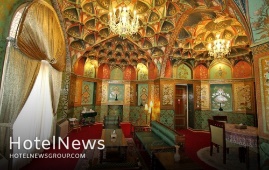
The occupancy rate of hotels in Iran has reached 45 percent, the head of the Iranian Hoteliers Association has announced. Following the planned measures, the occupancy rate of the country's hotels, which had fallen below five percent because of the outbreak of the coronavirus, has reached 45 percent over the past three months, IRNA quoted Jamshid Hamzehzadeh as saying on Sunday. Multiple problems, notably the pandemic, caused a severe impact on the tourism industry, the official explained. Even before the coronavirus outbreak and in 2019, travel was reduced due to heavy rains and flooding across the country, and the hotel industry had to recoup nearly 100 percent of the costs paid for canceled hotel reservations, he added. The Iranian hoteliers have lost 220 trillion rials (about $740 million) over the past two years, he noted. However, some problems have been resolved and the hotels’ condition has improved, he mentioned. Back in October, the official announced that Iranian hotels are ready to receive foreign tourists as the issuance of tourist visas and the flow of foreign tourists from land and air borders would be resumed. Ninety percent of the hotel staff have been vaccinated against the coronavirus, so the hotels are ready to welcome foreign tourists, observing strict health protocols, he said. The main destinations of foreign tourists in Iran are specifically cities such as Mashhad, Qom, Tabriz, Shiraz, Yazd, and Isfahan, and to return to the figure of over eight million incoming tourists before the outbreak of the coronavirus, serious planning is required, the official added. Iraqi tourists will flood the country once the borders open, but attracting tourists from Europe will require some time, he noted. However, he noted that two-thirds of the hotel staff have lost their jobs, he added. Back in September, Hamzehzadeh announced that all employees of accommodation centers across Iran are scheduled to be vaccinated against the coronavirus. “To vaccinate staffs of all accommodation centers, including eco-lodges, apartment hotels, and guest houses, as well as hotels, more coordination with the Ministry of Health is needed,” he added. Back in July, ISNA reported that the tourism industry of the country has suffered a loss of some 320 trillion rials ($1.1 billion) since the outbreak of the coronavirus pandemic. The pandemic has also ruined more than 44,000 jobs in a once budding travel sector of the country, the report added. Experts believe accommodation centers suffered the most as a result of the outbreak of the coronavirus in Iran and its subsequent unemployment and financial losses. Months of steep recession has taken its toll. Many travel insiders, hoteliers, and tour operators have faced big dilemmas such as bankruptcy, unemployment, debts, and the prospects of not being competitive on the international level. Panels of travel experts have mapped out new marketing strategies hoping Iran’s tourism would get back on its feet once again. For instance, the Head of the Iranian Tour Operators Association has said the international tourist flow to Iran will return to normal until 2022. Iran is potentially a booming destination for travelers seeking cultural attractions, breathtaking sceneries, and numerous UNESCO-registered sites. Under the 2025 Tourism Vision Plan, Iran aims to increase the number of tourist arrivals from 4.8 million in 2014 to 20 million in 2025.
Create: Dec 28, 2021 Edit: Dec 28, 2021 Regional News
he development of Sistan-Baluchestan through tourism can help the region address its challenges, the deputy tourism chief of the southeastern province has announced. Through the development of tourism, a peace project can be pursued with the neighboring countries in the region, CHTN quoted Mojtaba Mirhosseini as saying on Tuesday. To date, tourism activists in the province have focused on activities for the sustainable development of tourism, which is highly commendable, the official added. The port of Chabahar has the potential to become the maritime tourism capital of Iran, and also the northern region of the province has the potential to become the historical tourism capital of the country, which with the right planning and building of necessary infrastructure, can be achieved, he noted. In order to increase the demand for visiting the province, its attractions and beauty need to be presented as much as possible, he explained. SEO and web marketing are among the most effective digital marketing tools in tourism and can help introduce more people to the province and local businesses, he mentioned. He also noted that organizing fam tours for Iranian tourism activists and media people significantly changed people’s perceptions of the region. Last year, former Cultural Heritage, Tourism, and Handicrafts Minister Ali-Asghar Mounesan said that the development of the travel industry across Sistan-Baluchestan province is among the top priorities for the ministry. “I am interested in Sistan-Baluchestan, and the development of this province is a priority for this ministry and the government,” the former minister stated. “The majority of my travels during my tenure has been to Sistan-Baluchestan, which I consider as a safe province with significant values in terms of culture, history, handicrafts, and tourism.” The collective province -- Sistan in the north and Baluchestan in the south -- accounts for one of the driest regions of Iran with a slight increase in rainfall from east to west, and an obvious rise in humidity in the coastal regions. In ancient times, the region was a crossword of the Indus Valley and the Babylonian civilizations. The province possesses special significance because of being located in a strategic and transit location, especially Chabahar which is the only ocean port in Iran and the best and easiest access route of the middle Asian countries to free waters. The vast province is home to several distinctive archaeological sites and natural attractions, including two UNESCO World Heritage sites, namely Shahr-e-Soukhteh (Burnt City) and Lut desert.
Create: Dec 22, 2021 Edit: Dec 22, 2021 Regional News
Hotels have been around for as long as we can remember, but where in history is the origin of this core sector of the tourism industry? While it might come as a surprise for many, the three oldest hotels in the world are all located in Japan and have been operating for hundreds of years. While Japan can boast this very interesting fact, the real champion of historic accommodation facilities is Europe with a large variety of old hotels. In this context, Tourism Review presents the top 10 oldest hotels on the Old Continent – each country represented by only one hotel. Hôtel Cour du Corbeau (France), est. 1528 Located in the heart of Strasbourg and a stone's throw from the cathedral, the Cour du Corbeau is one of the oldest hotels in Europe, being in operation since the beginning of the 16th century. At the same time, it is also one of the most beautiful architectural ensembles of the Renaissance period. The city-owned hotel offers 63 luxurious rooms to its guest, guaranteeing top-notch comfort and an experience to remember. Hostal dos Reis Católicos (Spain), est. 1499 Owned by the Paradores chain (in the ownership of the Spanish government), the Hostal dos Reis Católicos was built as a royal hospital to accommodate pilgrims traveling to Santiago de Compostela. Today, it continues to welcome visitors from all parts of the world in more than 100 rooms and boasts incredible luxury in the heart of one of Spain’s most important cities. Hotel Damier (Belgium), est. 1398 Located on the Grote Markt square in Kortrijk, Damier boasts an impressive history. The first mention of the hotel dates back to the 14th century, with the building boasting an astonishing Rococo façade from 1769. Today, the hotel offers 65 luxurious rooms that will certainly impress even the more demanding individuals. Hotel De Draak (Netherlands), est. 1397 Founded in 1397 and located in the historic center of Bergen op Zoom, Hotel de Draak is the oldest hotel in the Netherlands. It is possible that the hotel is even older, but a huge fire destroyed the city archives in the same year. It is currently owned by the Hazen family and boasts an impressive 62 rooms which provide the guests with fine comfort and luxury. Zum Roten Baeren (Germany), est. 1387 Labelled as the oldest hotel in Germany, the first mention of the Zum Roten Baeren hotel in Freiburg dates to 1387, with the building itself being one of the oldest ones in the city. The guesthouse has been a social center of the city for years and today it has 25 rooms, 20 employees and the ambition to appeal more to the public with its historic charm. Hotel-Gasthof Löwen (Lichtenstein), est. 1380 The Löwen has been offering its services in the hospitality industry since 1380, thus being the oldest hotel in the country. Today the hotel offers elegantly furnished rooms, organization of events and conferences and provides its guests with a gastronomic experience in the form of a restaurant to top it all off. Gastagwirt (Austria), est. 1380 The family led Gastagwirt hotel has been firmly rooted in Eugendorf, in the Salzburg region, for over 700 years. As early as 1380, the "irrevocable, indispensable and forever hereditary liquor license" was awarded to the guesthouse with a letter and a seal. In the present day, the hotel provides fine accommodation services, but especially some of the best seminar and meeting services and facilities in the country. Hotel Interlaken (Switzerland), est. 1323 Hotel Interlaken in Switzerland is also among the oldest hotels in Europe. It was opened in 1323 and was initially meant to be a guesthouse for visitors of the local monastery, while later it was a part of the administration of the region. Today, the family led hotel offers 55 rooms, event organization and much more in the heart of Switzerland. Hotel Alte Goste (Italy), est. 1142 The Alte Goste hotel has been in operation since the 13th century, although the first innkeeper known by name was Gild Stainer in 1557. The region itself served as one of the most important connections between the Holy Roman Empire and Italy. Today the hotel offers a large variety of rooms and apartments for a carefree stay in the Puster Valley. The Olde Bell Hotel (UK), est. 1135 The Olde Bell, located in the small town of Hurley in England first opened almost 900 years ago in 1135. Initially, it operated as a guesthouse for visitors to the nearby Benedictine Priory, but throughout the time it gained even more importance up to the point when Winston Churchill and Dwight D. Eisenhower met there during World War II. Today the hotel offers 48 rooms that guarantee the guests a historic experience not to be forgotten.
Create: Dec 16, 2021 Edit: Dec 16, 2021 International News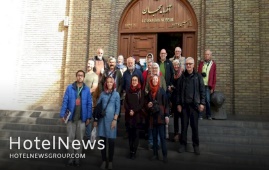
The northwestern Iranian province of East Azarbaijan plans to host a delegation of Turkish journalists and media personnel for a familiarization tour across the province in the near future, the provincial tourism chief has announced. A fam tour introducing East Azarbaijan’s tourism capabilities will be organized in cooperation with the private sector during the winter for Turkish media representatives and tourism activists, Ahmad Hamzezadeh said on Monday. A suitable platform can be provided for the development of the tourism industry by having fam tours in the province and taking advantage of the existing capacities in the sector, he explained. Holding fam tours is the best strategy for developing tourism in top countries, the official added. To accomplish this goal, the province’s tourism department is planning to organize fam tours for tourism activists and media members of the other neighboring countries early next year, he noted. Soaked in history and culture for millennia, Tabriz, which is the capital of East Azarbaijan, embraces several historical and religious sites, including the Jameh Mosque of Tabriz and Arg of Tabriz, and UNESCO-registered Tabriz Historic Bazaar Complex to name a few. The city became the capital of the Mongol Il-Khan Mahmud Gazan (1295–1304) and his successor. Timur (Tamerlane), a Turkic conqueror, took it in 1392. Some decades later the Kara Koyunlu Turkmen made it their capital, it was when the famous Blue Mosque was built in Tabriz. The city retained its administrative status under the Safavid dynasty until 1548 when Shah Tahmasp I relocated his capital westward to Qazvin. During the next two centuries, Tabriz changed hands several times between Persia and Ottoman Empire. During World War I, the city was temporarily occupied by Turkish and then Soviet troops. The ancient city was declared a world craft city of carpet weaving by the World Craft in 2016. It also bore the title of 2018 Islamic Tourism Capital.
Create: Dec 14, 2021 Edit: Dec 14, 2021 Regional News
Local authorities plan to boost medical tourism in Gachsaran town, southwestern Kohgiluyeh and Boyer-Ahmad province, the provincial tourism chief has said. Infrastructure has been provided in Gachsaran to facilitate the development of health tourism, Majid Safai announced on Saturday. “There is a strong capacity for the development of the tourism industry, especially health tourism, in the city because of the airport and its fast air access to medical facilities and equipment,” the official explained. Citing an example, the official reminded of a special hospital dedicated to mothers and children which offeres quality servives to domestic and foreign patients. During the coronavirus outbreak, 350 foreign tourists received visas to use the medical services provided by the hospital mentioned, he noted. Many domestic experts believe that medical tourism in Iran is a win-win opportunity both for the country and foreign patients, as they are offered affordable yet quality treatment services and the country gains considerable foreign currency. Iran is one of the major destinations for health tourism in the region, and patients with 55 different nationalities, mostly from neighboring countries including Iraq, Kuwait, Bahrain, Qatar, Saudi Arabia, Oman, Pakistan, Afghanistan, Tajikistan, and Turkmenistan are seeking to use Iran’s services and facilities in this field. The Islamic Republic has set its goals to exceed its yearly medical travelers to around 2 million in the Iranian calendar year 1404.
Create: Dec 12, 2021 Edit: Dec 12, 2021 Regional News
ed by members of his cabinet, including Energy Minister, Industry, Mining, and Trade Minister, Agriculture Minister, Culture Minister as well as Cooperatives, Labor and Social Welfare Minister. Falak-ol-Aflak is an imposing monument of Sassanids, which dominates the capital city of Khorramabad in western Iran. The unmissable eight-towered monument seems particularly dramatic when floodlit at night, offering picturesque views of its encircling crenelated battlements. Lorestan is a region of raw beauty that an avid nature lover could spend weeks exploring. The region was inhabited by Iranian Indo-European peoples, including the Medes, c. 1000 BC. Cimmerians and Scythians intermittently ruled the region from about 700 to 625 BC. Lorestan was incorporated into the growing Achaemenid Empire in about 540 BC and successively was part of the Seleucid, Parthian, and Sassanid dynasties.
Create: Dec 11, 2021 Edit: Dec 11, 2021 Regional News
